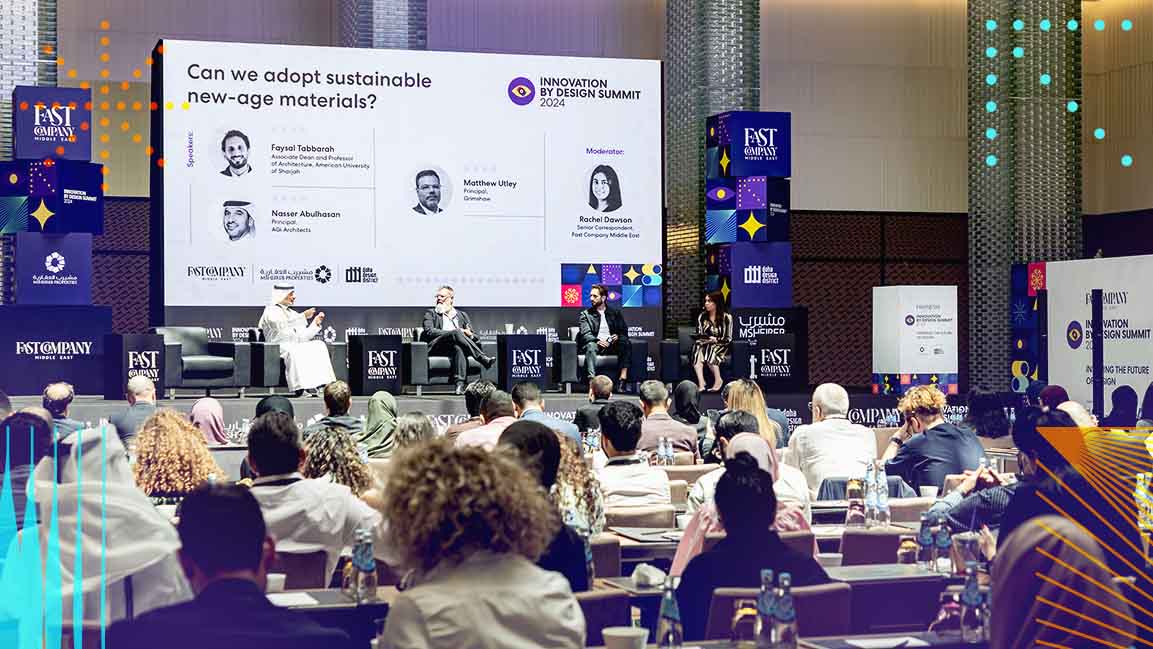- | 9:00 am
How collaboration can end the climate crisis
Cities like New York and London need to work in unison to scale and grow climate change programs and climate tech innovators to help the greater good.

Mayor Sadiq Khan has bold ambitions for the City of London to become zero-carbon, zero-pollution by 2030. However, to truly hold ourselves accountable and hit these massive 2030 goals, it’s about ensuring that cities work together to collectively address an issue head on that impacts us all. Cities like New York and London need to work in unison to scale and grow climate change programs and climate tech innovators to help the greater good.
Here are a few actionable ways cities, policy makers, and organizations have been collaborating, and how I envision it growing.
POLICY MAKERS CAN’T JUST CHECK ESG BOXES
Policy makers cannot work in silos and need to provide platforms where collaboration is being fostered. Fortunately, organizations such as C40, a collection of dozens of mayors across the world looking to work together on climate change, have helped set the foundation for more in-unison work as well. They have a clear-cut mission to halve the emissions of their member cities within a decade while simultaneously stimulating the green economy. Earlier this winter, C40 mayors announced they would collectively develop programs and initiatives to drive the creation of 50 million additional green jobs by 2030, led by C40 chair Khan.
Cities looking to join also need to have an actionable climate plan or initiatives that drive urgency and attention given to the Paris Agreement goal of limiting global temperature rises to no more than 1.5 degrees Celsius (the equivalent of 2.7 degrees Fahrenheit). This helps set a global model for cities around the world to follow suit and work toward a zero-carbon future.
It’s also critical to provide a platform for younger generations to get more involved in the fight against climate change. The Global Youth and Mayors Forum partners young climate activists with mayors from across the world to provide an inclusive environment for voices of the future to be heard on top of educational opportunities. This shouldn’t be limited to just C40 though; we all need to be encouraging children to get involved early to help shape the future we want for them.
Food waste remains of great concern as well. Research shows that, without substantial changes, greenhouse gas emissions from the food sector will increase by 38% by 2050. New York City and London have worked closely together to address this as mayors Eric Adams and Sadiq Khan are strong advocates for the Good Food Cities Declaration, even jointly announcing participation together. This declaration provides more direct access to healthier and nutritious food to city residents while implementing programs to reduce food waste and advocating for the benefits of a planetary health diet.
OUTLINE ROAD MAPS FOR SUSTAINABLE COMPANIES TO GROW
Fortunately, global funding is growing, even as total VC funding dipped in 2022. New data from London & Partners shows the investment into climate tech companies globally increased significantly as it reached roughly $101.3 billion over 2022 and 2021, compared to $44.5 billion in 2020 and 2019. London and New York have especially received a lot of attention with climate funding the last two years as London-based companies have received $3.7 billion in funding and New York-based firms received $3.1 billion.
Both cities have also taken an interest in making real estate and housing more sustainable as well, by outlining clear-cut objectives. For example, the London Mayor’s 2022 Business Climate Challenge addresses the need for over 26,000 buildings each year to be retrofitted in London. The NYC-based VC firm Fifth Wall also expanded to London last year and closed a $500 million fund earlier in 2022, specifically to focus on decarbonizing the real estate industry.
Fifth Wall estimated that real estate accounts for roughly 40% of CO2 emissions, but historically it hasn’t been a strong focus for climate VCs, with an estimation of only 6% of funds going toward the real estate market.
London is also keen on supporting the development of sustainable infrastructure and eco-friendly transportation by outlining concrete goals to achieve net zero by 2030. For example, London’s electric vehicle (EV) infrastructure strategy lays out a road map to a 2030 phase-out of gas and diesel vehicle sales, presenting a golden opportunity for organizations such as Lime to capitalize on. In fact, Lime announced in 2022 an investment of 20 million pounds to expand London’s program as ridership data showed rides using Lime e-bikes doubled in 2021 compared to both 2020 and 2019 combined. This commitment to growth and change even recently helped Lime become the first micromobility company to post a full profitable year.
Companies looking to expand both domestically and internationally should communicate to investors how they play into larger policy framework, such as London’s EV infrastructure strategy. It’s on policy makers to ensure these messages are also being promoted, but companies that are aware of them ahead of time will attract investor attention.
It’s evident that much work still needs to be done to fight climate change and accomplish the goals set by the Paris Accord, but it’s only that much harder if organizations, cities, and countries work in silos.
Programs like C40 are a great start, but they shouldn’t stop there. There’s arguably no greater issue that collectively impacts us all, so we need to continue to encourage collaboration.







































